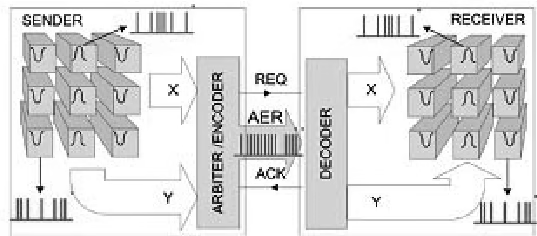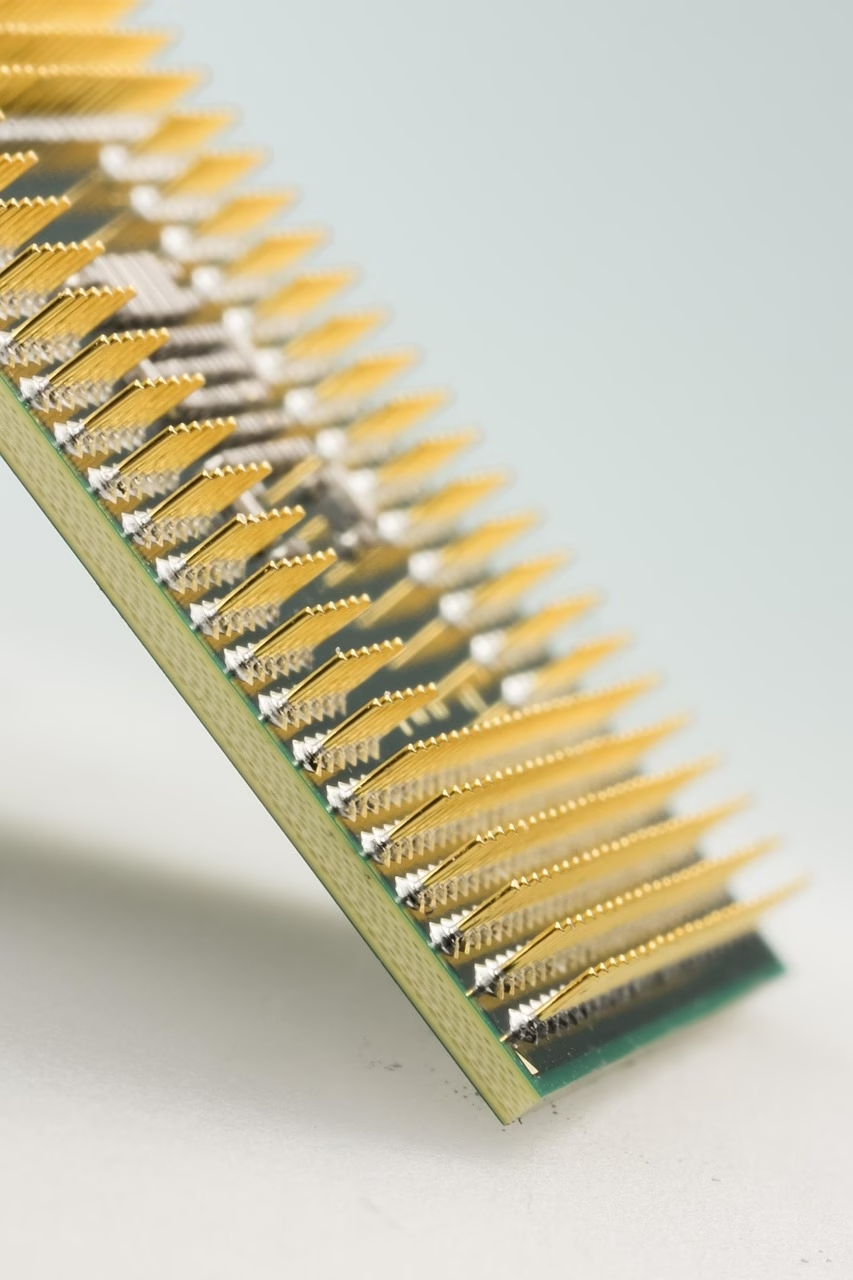Introduction
Address-Event Representation (AER) is a neuromorphic communication protocol designed to emulate the brain’s event-driven processing. It facilitates the transfer of sparse neural events between neuromorphic chips, enabling efficient and scalable communication in spiking neural networks (SNNs). First theorized in the early 1990s by Sivilotti (1991) and Mahowald (1992), AER has since become foundational in neuromorphic computing and bio-inspired systems.
Historical Context
The concept of AER emerged during the early development of neuromorphic engineering. Carver Mead coined the term “neuromorphic” in the late 1980s, focusing on designing systems that mimic the brain’s structure and functionality. Sivilotti and Mahowald proposed AER as a method to encode and transmit spikes efficiently in neuromorphic vision systems. The first implementations followed shortly after, with applications in silicon retina and bio-inspired vision sensors, such as those by Boahen (2000) and Lichtsteiner, P; Posch, C; Delbruck, T. (2008).
How AER Works: Step-by-Step
AER operates as an asynchronous protocol, transmitting spike data in real-time without timestamps. Below is a breakdown of its mechanism:
- Event Detection:
- A sender module detects an event, such as a spike generated by a neuron or sensor.
- The event is spatially identified by its location on the chip.
- Encoding:
- The event’s location is encoded into an address, forming an “address-event.”
- Timing information is implicitly preserved by sending events as they occur.
- Arbitration:
- If multiple events occur simultaneously, an arbitration mechanism resolves conflicts.
- This ensures that events are transmitted sequentially on the shared data bus.
- Transmission:
- The encoded address-event is transmitted asynchronously along the data bus.
- Time-division multiplexing allows multiple virtual connections to share a single physical channel.
- Decoding and Reconstruction:
- A receiver decodes the address-event to identify the originating location.
- The decoded event triggers corresponding actions, such as activating a neuron in a downstream module.

Key Characteristics (AER)
AER’s design offers several advantages:
- Asynchronous Communication: Events are transmitted only when they occur, minimizing latency.
- Scalability: By encoding events sparsely, AER supports large-scale networks with reduced wiring complexity.
- Energy Efficiency: Event-driven processing consumes power only during activity.
- Real-Time Processing: Fine temporal resolution enables precise timing for event-based systems.
- Flexibility: Supports various arbitration and encoding schemes for different applications.
Applications of AER
Academic Research
AER has been extensively used in experimental setups to explore neuromorphic computing and biohybrid systems:
- Silicon Retina Sensors:
- Early implementations like Boahen’s silicon retina used AER to mimic biological vision systems.
- Modern dynamic vision sensors (DVS) employ AER for high-speed motion detection.
- Spiking Neural Networks (SNNs):
- Researchers have used AER to scale SNN architectures by routing spikes efficiently.
- Techniques like Time-to-Event Margin Propagation (TEMP) leverage AER for spatio-temporal pattern recognition.
- Biohybrid Systems:
- AER enables communication between biological neurons and neuromorphic chips in hybrid setups.
- For example, memristive devices integrated with AER process biological spike data for adaptive learning.
Commercial Devices
While still predominantly in research, some commercial devices utilize AER:
- Dynamic Vision Sensors (DVS):
- Cameras like iniVation’s DVS cameras use AER for real-time motion analysis in robotics and autonomous vehicles.
- Neuromorphic Chips:
- IBM’s TrueNorth and Intel’s Loihi chips incorporate AER principles for energy-efficient AI applications.
Conclusion
Address-Event Representation is a cornerstone of current neuromorphic engineering, bridging biological inspiration with technological innovation. From its theoretical inception in the early 1990s to its implementation in cutting-edge research and commercial devices, AER continues to drive advancements in efficient, scalable computing systems. Its ability to emulate brain-like processing makes it indispensable for future developments in artificial intelligence and neurotechnology.


